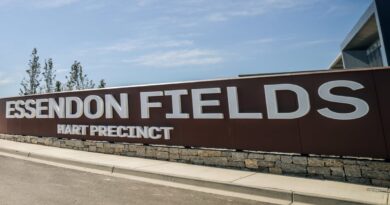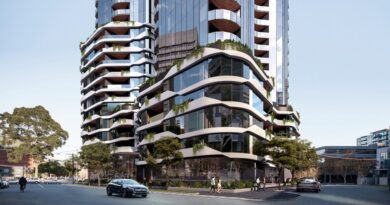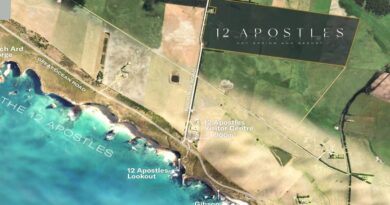Questions and Answers: Stevensons Road Closure (Brookland Greens, Cranbourne) from Casey Council
Further information regarding things to do if you stay at home have been supplied by the EPA as an information sheet on this website.
If people want to access the DHS grant to assist them to relocate, they should contact Council on 9705 5200. Council will provide information on the location of DHS grants officers.
How can we relocate?
People who would like to relocate and wish to access a grant should contact Council on 9705 5200. Council will provide information on the location of DHS grants officers. More information on Emergency Accommodation Grant Information is available on this website.
How long will I need to relocate for?
The duration that people will need to be relocated for is still unknown. However it could take 12 – 24 months to undertake the works which are expected to eliminate the methane migration from the landfill.
What do I do if I want to relocate?
People who would like to relocate and wish to access a grant should contact Council on 9705 5200. Council will provide information on the location of DHS grants officers. More information on Emergency Accommodation Grant Information is available on this website.
When will the questions from the meeting be answered?
Council will continue to seek answers from the relevant authorities and provide these back to people via this website, the Community Update newsletters and public meetings.
What will happen to our property values?
Property values are likely to decline in the short term but it is unknown what will happen in the long-term. Brookland Greens Estate is a beautiful place to live and when the gas mitigation measures are controlling the leak, it is likely that prices will return to normal levels.
Do we have to pay our rates?
The City of Casey resolved at the Council meeting of Tuesday 16 September to waive rates for 12 months for residents of the Brookland Greens estate, adjacent to the Stevensons Road closed landfill. Residents will be officially advised of this. Click here to read the media release about the rates waiver.
Why was no one told about the meetings and had to learn about it from the media?
Council, EPA and CFA distributed a flyer to residents on Wednesday 10 September advising them of the meeting. The agencies wanted to get information out to residents as quickly as possible and have a meeting as soon as possible to provide additional information. Soon after the first meeting, the media got hold of the story.
Is the Narre Warren Tip safe?
The two tips are completely different. The Narre Warren tip has a Basalt Bowl to control the gas. Currently, the Narre Warren tip is producing 300 cubic metres of landfill gas per hour where as the Stevensons Road closed landfill site is producing 1200 cubic metres per hour. This is unprecedented in a landfill of this size anywhere in Australia and was not something that Council or the EPA were able to predict.
Who’s taking responsibility for this situation?
The CFA is taking responsibility for the emergency management, including the short term monitoring of homes. Council is responsible for the onsite works, the ongoing in-home monitors and the venting of houses. The EPA is responsible for regulating the site and providing expert advice to Council. The Department of Human Services and Council are taking responsibility for the relocation of people who want to leave.
Who’s giving the compensation?
Currently, the State Government is providing immediate financial assistance to ensure that lack of finances is not a consideration when people need to relocate. A State Government Committee is to be established to consider a number of matters including compensation.
Why was the local Member of Parliament or any other representative from State Government not at the meeting?
This meeting was called to provide residents with advice from government agencies such as CFA, EPA, Department of Human Services and Victoria Police. State representatives will be invited to attend the next public meeting on Thursday 25 September.
Is Council covered by insurance?
Council is covered for Public Liability and Professional Indemnity Insurance.
Why aren’t rates being adjusted now?
Council will considered the issue at the Council meeting on Tuesday 16 September 2008. Residents will be officially advised of the outcome.
What action has Council taken to increase confidence for the community?
The primary focus is to install monitors in homes and ensure people understand how to vent their homes. Based on advice from the panel of experts, Council will now be implementing the following initiatives:
Horizontal gas bores will be drilled underground along the boundary of the closed landfill site.
Installing a cut-off trench on the western boundary of the closed landfill.
On identification of further areas in the neighbouring residential area where the landfill gas is coming to the surface, bores and trenches will be dug, vents installed and then the trenches backfilled with gravel.
Additional works will be conducted on site to address the gas leaking from the site. It is likely that this work will take several months before it starts to take effect and it may take 18 – 24 months before all the mitigation works are completed.
Council has started issuing a daily SMS update via mobile phones to residents regarding the gas levels on the estate.
When is the next meeting?
The next meeting will be held on Thursday 25 September at the Balla Balla Centre at 7pm.
Why is so much money being spent on Casey Fields and CALC but only $5M on our health?
Council funds a range of facilities and services throughout a rapidly growing municipality. Council has spent $5 million on the site and this will continue to increase. Cost has never been an issue in relation to the site as Council has spent the money it felt was required at the time. Council will be seeking State Government assistance with forthcoming costs.
How long do we have to live like this?
The situation is changing every day and we are working to reduce the risk, and actions are being done daily. Residents will be kept informed of all the gas readings.
What are the health affects of methane?
An information sheet on landfill gas and health, issued by the Department of Human Services is available on this website. It indicates that exposure at low levels, as has been found in some houses, is unlikely to result in any adverse health effects and is not known to cause serious problems like cancer or birth defects.
If people are concerned about a specific health problem, they should see their doctor.
What about security for properties of those who choose to evacuate?
The police is managing security. It has been stepped up with more patrols in the area. The police will be notified of the address of people who are leaving.
Council is also investigating private security options.
National media attention could cause the house prices in Brookland Greens and Cranbourne to plummet. Is it possible not to name the estate?
All the spokespeople have been asked to refer to the ‘residential area adjacent to the Stevensons Road closed landfill site’.
Is the developer being represented here and do they have any responsibility?
Council has invited representatives from the Peet Group to the next community meeting.
Can the media be advised that residents do not have to leave?
The information given to the media clearly states that the decision to leave is voluntary.
Ten years ago Brookland Greens was built, why wasn’t something done 10 years ago to stop this from happening, when the houses were given the green light to go ahead?
Council and the EPA objected to this development when the Peet Group put in an application to develop the site. Once VCAT approved the development Council could not stop houses being built.
There has been speculation about Council’s objection and further details can be found here about the VCAT ruling. Council’s focus was on putting in sufficient bores to ensure that the gas could be contained in site. However, the level of methane being produced is three to four times what was expected under normal landfill situations. The current infrastructure is not containing the gas and, because the site does not have any clay lining, the gas is escaping.
What are you going to do at other landfill sites in Casey such as Narre Warren and Hampton Park to prevent this from happening again?
The other Council sites have different characteristics.
What is the media strategy to contact and keep information accurate and fix any false claims that have been stated?
Council is monitoring the media on a daily basis and talks to the journalist if their information is incorrect. However, the primary focus is communicating directly with residents so they are not reliant on the media for information. We are asking all residents to give Council their mobile number so we can SMS daily updates relating to gas levels. Please contact the City of Casey on 9705 5200 to register for this service.
What can we do to reinstate community confidence?
Council has developed a Cranbourne Development Plan, which is planned to be launched later this year. Based on recent events, the amount of money needed to achieve a positive outcome will need to be reviewed.
Has Council done enough to manage the site?
The Cities of Casey and Frankston have invested over $5 million in rehabilitating and managing the closed landfill since June 2005. Due to the construction of the landfill and the local soil type, there are real difficulties in managing offsite impacts under these landfill conditions. That is why Council and EPA’s position was that a buffer area should exist around the landfill.
Will it be compulsory for all homes to have monitors?
Monitors are not compulsory but are strongly recommended. Council is trying to source monitors as quickly as it can. It is anticipated that there will be approximately 300 monitors in homes by the end of next week.
Are the detectors in the homes accurate?
Once detectors are installed, residents will receive a briefing on how they work and what they are telling you.
Why didn’t Council or EPA monitor the site properly?
The site has been continually monitored which is why Council has been able to detect the methane that is causing the problem.
How long are people going to have to monitor their house?
The monitors will be in people’s homes until further works (such as additional bores) are operational onsite and the gas levels coming from the site are back to normal levels. This could take up to two years but it could be sooner.
When will we hear from Council regarding having an in-house monitor installed in our home?
There are approximately 70 monitors out already that are moved every couple of days and additional monitors will be installed as soon as they arrive. Within two weeks there will be approximately 300 monitors installed in peoples’ homes. During the next two weeks, the monitors will be installed based on peoples’ level of risks and needs. Since Wednesday there have been 15 teams from the CFA monitoring peoples homes. All homes in the estate were tested and no methane has been detected.
Why wasn’t this problem investigated 10 years ago?
The situation has been investigated and monitored for a long time. However, no one predicted that gas levels outside the boundaries of the landfill would reach the levels they have. It has not occurred in the other landfills that are being monitored.
Houses facing into the tip believe that they haven’t been tested.
Almost all houses in the affected area have now been tested. Since Thursday 11 September 2008, methane has been found in only one house at a level of 0.8 per cent and no methane was detected in any other homes. Residents will be provided with monitoring levels on a daily basis.
What happens if you are at work during the time they are doing the monitoring?
If your home has not been tested, you should call the Council and they will coordinate with the CFA to have someone come to test your home at a time that is convenient for you.
Will we end up with a bore in our gardens?
Currently there are no plans for bores to be installed on private land. However, there may be some drilling on peoples’ property if there is a need to test under the house slab. This will be discussed with the homeowners on a case by case basis.
A bore was drilled on 16 September 2008, why?
Council is continuing to install ventilation and monitoring bores. These have been planned for some time.
Can the storm water pipes in my back yard be tested?
Yes, testing is being conducted in stormwater drains near the gutters in the estates, however if there are any unusual odours in drains on your property, please contact the City of Casey to arrange further investigation.
What area of the estate is affected?
The source of the high level of methane was a house near the north-west corner of the landfill. The guidelines recommend that homes within 250 metres around this house may be affected. However, the extent of the methane spread is unknown at this stage and advice is being provided to all areas in the area between the landfill and the power lines and the landfill, and the Cranbourne Frankston Road.
Due to the gas underground, is there a risk to the petrol station?
We do not believe there is a risk from the gas. This is because the gas is underground and there are no likely ignition sources.
18 months ago you told us the remedies would work, they haven’t, how do you know these ones will?
The Stevensons Road Closed Landfill is producing very large volumes of gas, about eleven and a half Olympic swimming pools per day. This situation is unique in Australia, and therefore a team of international experts from the UK, Canada, USA and Italy are advising Council and EPA. Council and the EPA will do everything possible to ensure that the level of gas escaping from the site is reduced to a safe level.
Is the Stevensons Road landfill lined?
The site was issued a licence to operate in 1996. At that time, the design was considered best practice but did not have a clay side lining.
If it has taken 18 months for the gas to get into this area, then what about outside of this area?
Gas has been detected at depth and more bores will be put in further afield to locate that gas. Within the next week or so there will be a series of probes placed further away from the site that will help to find the gas, if any exists.
What happens if you cannot stop the gas and it just keeps on going?
Council and the EPA will do everything to prevent this occurring. However, if it does continue to leak into the estate, people will continue to need to make decisions based on the latest information that will be provided to residents.
Can there be an explosion under ground?
It is highly unlikely that there will be an explosion under the ground because the gas needs a source of ignition.
Will all houses be tested?
Yes. All 436 houses in the affected area will be tested by the CFA, providing residents give approval.
How big were the explosions in the US and UK? Is this the same scenario?
The size of explosions is very different from site to site. The EPA’s website, www.epa.vic.gov.au, has more information.
There are always small fires at the landfill, could this cause an explosion?
Bushfire season should not impact the landfill. The main issue is methane in a confined space at levels of between 5 and 15 per cent.
UK experts are advising that it could take 18 months to rectify, what solutions are they offering?
A preferred option includes the construction of a trench on the boundary of the landfill. The EPA’s website, www.epa.vic.gov.au, has detailed information.
Will fixing the tip, fix the smell?
Stopping the methane from leaking under the ground will not stop the smell that escapes from the site above the ground and blows across the estate.
If the gas is leaking in around the plumbing pipes, is it possible to seal them?
Council has been sealing cavities around the pipes in homes where methane gas is being detected. Sealing the pipe cavities is an appropriate mitigation method. Advice should be sought regarding the right type of sealant to use if you do this yourself.
Could a heater in the ceiling with a gas pilot be an ignition source?
Any naked flame would be an ignition source, however, no methane has been found in roofs. It is unlikely that methane would build up in a roof due to the ventilation in a roof.
Why isn’t it isolated by a concrete barrier?
Engineers are currently looking at installing a bentonite (clay) wall. A number of options are currently being investigated by experts. The EPA’s website, www.epa.vic.gov.au, has more detailed information.







